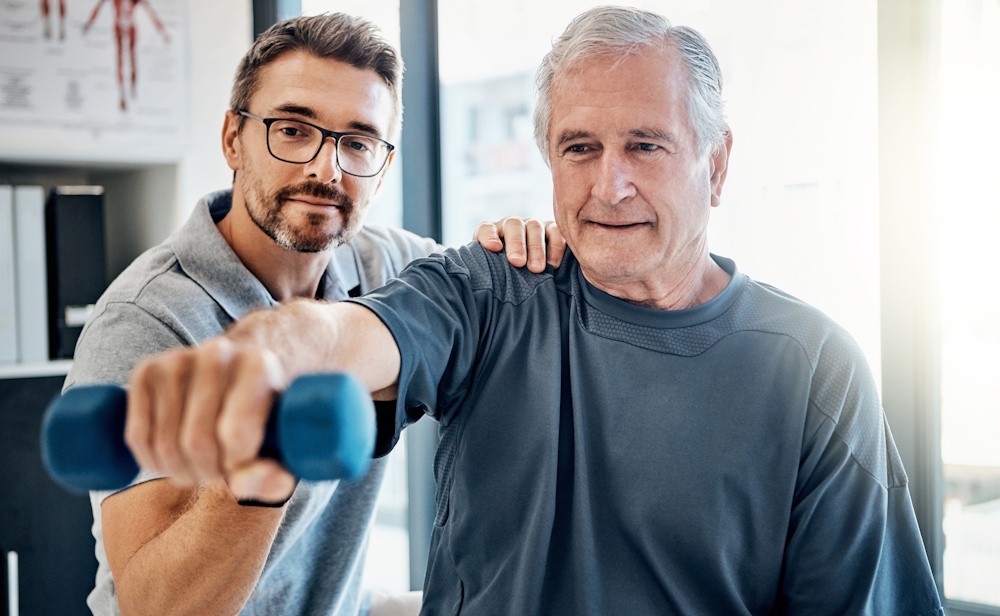What to Expect From Orthopedic Physical Therapy Programs
Professional physical therapy (PT) is a holistic healthcare modality that helps individuals recover from injuries, surgeries, and illnesses that impair physical function and mobility. Through a series of carefully structured stages, orthopedic physical therapy has proven effective in restoring strength, flexibility, and coordination, allowing patients to regain their independence and quality of life.
In this blog, we’ll explore the stages of physical therapy, from initial assessment to full recovery, and explain how each phase contributes to the rehabilitation process. Afterward, we’ll explain how to find a physical therapy clinic near you.
What Is Physical Therapy?
Physical therapy is a type of rehabilitation that involves the use of therapeutic exercises, manual therapy, education, and specialized techniques to treat musculoskeletal and neurological conditions. Professional physical therapy’s primary goals are to alleviate pain, restore physical function, and prevent further injury by addressing underlying medical issues and promoting holistic healing.
Who Are Candidates For Orthopedic Physical Therapy?
Physical therapy is beneficial for a wide range of individuals, including:
- Athletes and active individuals: PT can help those recovering from sports-related injuries such as sprains, strains, or tendonitis.
- Post-surgery patients: Individuals who have undergone surgeries like joint replacements, ligament repairs, or spinal surgeries greatly benefit from orthopedic physical therapy.
- People with chronic pain conditions: Physical therapy holistically helps reduce pain in those suffering from conditions like arthritis or fibromyalgia.
- Neurological patients: Individuals with multiple sclerosis, spinal cord injuries, or stroke often use physical therapy to manage their conditions.
- Geriatric patients: Older adults experiencing reduced mobility, balance issues, or age-related musculoskeletal conditions benefit from PT.
By addressing the unique needs of each patient, professional physical therapy helps improve mobility, reduce pain, and restore functional abilities, making it an essential service for many individuals.
The Different Stages Of Physical Therapy
Orthopedic physical therapy is typically divided into distinct stages, each focusing on different aspects of the rehabilitation process.
Acute Phase
The acute phase is the initial stage of physical therapy, often beginning shortly after an injury or surgery.
In the acute phase, patients work toward:
- Pain and inflammation management.
- Protection and immobilization of the affected area.
- Maintaining joint mobility and preventing stiffness.
- Understanding how to support their healing and avoid re-injury.
Intermediate Phase
The intermediate phase involves transitioning from passive treatments to more active exercises.
In the intermediate phase, patients will:
- Increase strength and flexibility.
- Enhance balance and sense of body position and movement.
- Improve functional movement through activities that mimic daily tasks.
- Gradually increase activity levels as tolerated.
Advanced Strengthening Phase
The advanced strengthening phase further enhances strength, endurance, and function.
Goals of the advanced strengthening phase include:
- Engaging in more challenging strength training exercises to build overall stability and power.
- Performing plyometric and agility exercises to simulate the physical demands of a sport or activity.
- Cardiovascular conditioning to improve endurance and overall fitness.
- Functional and sport-specific training that simulates work-related or sports-specific movements.
Return to Sports or Full Activity Phase
The final stage of orthopedic physical therapy focuses on preparing patients for a return to sports, work, or full daily activity.
In this phase, patients will:
- Engage in sport-specific conditioning that replicates the intensity and demands of the sport, including agility drills, jumping, sprinting, and sport-specific movement patterns.
- Undergo functional capacity testing to evaluate the patient’s readiness to return to their previous level of activity.
- Learn injury prevention strategies, including proper warm-up routines, stretching techniques, and safe movement patterns.
- Build mental and emotional readiness before resuming their activities.
How to Find a Physical Therapy Clinic Near You
Orthopedic physical therapy is an effective and multi-faceted process that helps people rehabilitate from injuries, surgeries, and medical conditions that affect their physical abilities. Each stage of professional physical therapy serves a distinct purpose, fostering safe and productive recovery.
Whether you’re an athlete returning to peak performance or an individual recovering from open knee surgery, understanding the stages of physical therapy can help you make informed decisions and set realistic expectations about your recovery. By partnering with a skilled physical therapist, you can successfully navigate these stages, achieve your goals, and reclaim your quality of life.
If you’re experiencing pain or limited mobility, consider consulting an orthopedic medical practice or licensed physical therapy clinic near you. During your consultation, your physician or physical therapist will explain how professional physical therapy can help you overcome your specific medical condition and manage your symptoms.

